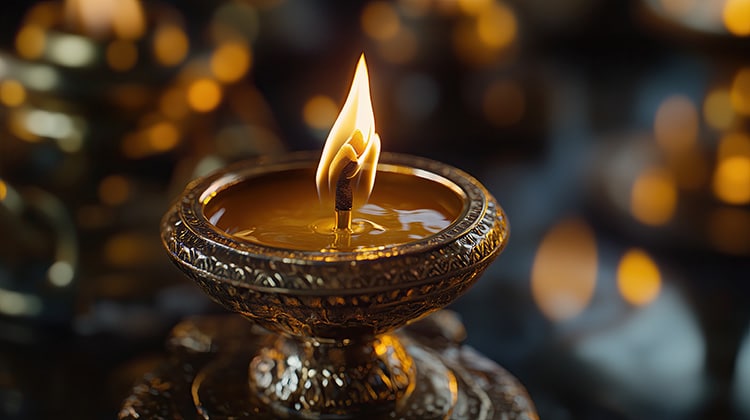What is Chakra Meditation?
Category: Types of Meditation

What is a Chakra?
“Chakra” is a Sanskrit word that literally means wheel or cycle. In the context of spiritual disciplines such as yoga, the chakras are considered to be wheel-like energy centers that are not physically discernable but belong to the subtle spiritual body and connect it to the material one. The 7 main chakras are situated along the spine from the sacrum at the bottom up to the crown at the top of the head.
Mentioned in ancient Vedic texts, present in both yoga and esoteric Buddhism, chakra-based energy work has found favor with many of the integrative New Age disciplines. Seen in the light of psychology, chakras are associated with color therapy, Maslow’s hierarchy, childhood developmental theories and more.
Each of the 7 key chakras has a specific function that corresponds with particular aspects of our human experience.
What are the 7 Main Chakras?
The Root Chakra
The root chakra, or Muladhara in Sanskrit, is located at the base of the spine. It governs the way we connect to the outside world and oversees our basic needs for stability, food and shelter. It is associated with the color red and the earth element.
The Sacral Chakra
Svadhisthana, the sacral chakra, is located below the navel. This chakra is intimately linked to our sexuality and creative process. Its energy encourages us to explore the world and use our creativity to find artistic outlets and adapt to change. Its base color is orange and its element is water.
The Solar Plexus Chakra
The Sanskrit name Manipura means City of Jewels. This chakra is located between the rib cage and the navel. It is believed to be a source of personal agency and self-esteem in that it translates our desires into action. Physically, it helps regulate digestion. Its color is yellow and it is associated with the fire element.
The Heart Chakra
Anahata, the heart chakra, means “unstuck” in Sanskrit. This chakra lies at the middle of your cardiovascular system and is connected to organs such as the heart and lungs. The heart chakra is associated with a person’s emotional profile, such as their natural generosity and ability to appreciate compassion and connectedness. Its color is green and its element is air.
The Throat Chakra
Vishuddha, the throat chakra, governs the neck, mouth, tongue and other physical elements of the throat area. It regulates how we communicate and allows us to express ourselves skillfully. Confidence and understanding are related to this chakra. Its color is blue and its element is ether.
The Third Eye Chakra
Ajna is located behind the forehead, at the level of the space between the eyebrows. The “third eye” chakra governs intuition and insight, especially at spiritual levels. A receptive and balanced ajna chakra empowers us to notice interconnections that exist in this world and beyond. Its color is indigo and its element is light.
The Crown Chakra
Sahasrara, the crown chakra, is situated at the top of the head. Also known as the “thousand petal lotus” chakra, it is considered to be the most spiritual of the core chakras as it governs spiritual consciousness and the potential for awakening to the dimension of the divine. Its color is purple (or white) and it embodies the spirit.
What is chakra meditation?
All sorts of practices fall under the chakra meditation umbrella. Some are devoted to spiritual awakening; others to healing or relaxation. Spiritual practice should be undertaken with a competent teacher.
How is Mindfulness related to chakra meditation?
Like chakra meditation, mindfulness is a method whose goal, ultimately, is to form a solid basis for not only temporary benefits of improved health and less stress but also personal transformation. Also like chakra meditation, mindfulness requires focus and a balance of determination and relaxation.
Unlike chakra meditation, mindfulness does not require any particular beliefs aside from a belief in the potential benefits of the practice. Mindfulness is more about experiencing the present moment just as it is, and learning to remain grounded in the here and now. People who practice mindfulness meditation often find that they are more attentive, grounded and receptive to others outside of their practice sessions.






